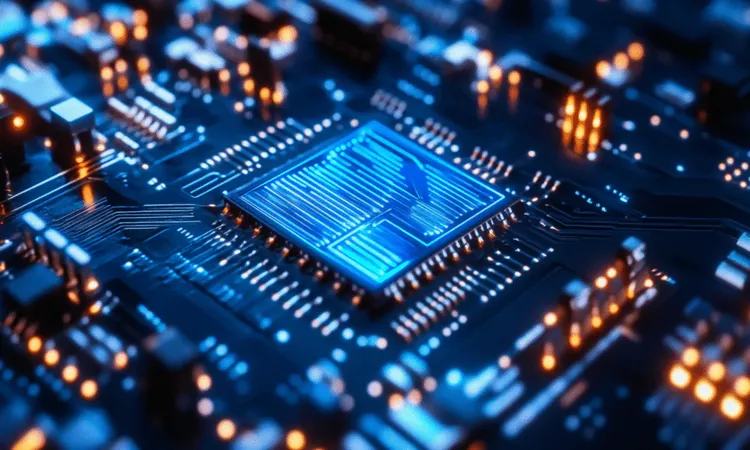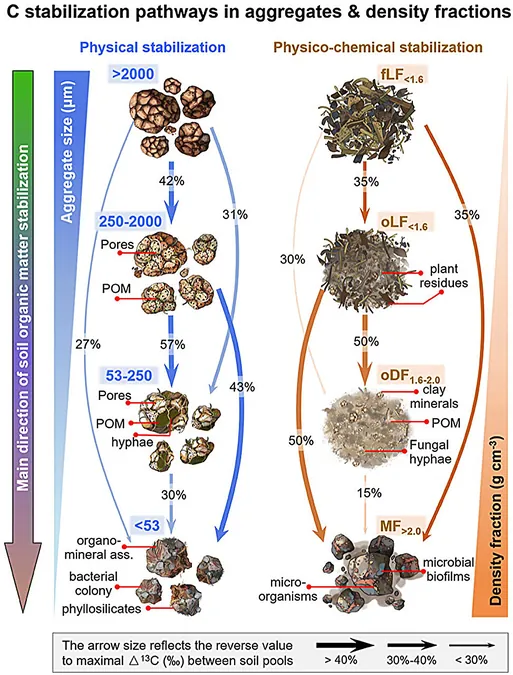
Revolutionizing Electronics: The Groundbreaking 2D CMOS Computer Takes Center Stage!
2025-06-16
Author: Arjun
In the ever-evolving world of electronics, a monumental shift may be on the horizon as researchers unveil the first 2D CMOS computer, a remarkable advancement that could redefine semiconductor technology as we know it.
Silicon's Limitations Gone: Meet the Future of Electronics!
For decades, silicon has been the backbone of electronic devices, powering everything from smart gadgets to electric vehicles. But as devices get smaller, silicon faces diminishing returns in performance. Enter two-dimensional (2D) materials, which are only one atom thick and are proving to be a game changer. With incredible electronic properties and scalability, these materials emerge as a formidable alternative.
The 2D Breakthrough: A New Era All Begins Here!
Researchers at Penn State have stepped forward to address the integration challenges between CMOS technology and 2D materials. Their innovative approach has birthed a revolutionary 2D one instruction set computer that brilliantly combines large-area n-type MoS2 and p-type WSe2 field-effect transistors (FETs).
The Magic of FETs: How They Power Modern Electronics!
FETs are essential components in managing current flow within semiconductor devices. By utilizing 2D materials, Penn State’s team optimized the threshold voltages of both n- and p-type FETs, enabling remarkable circuit efficiency at low power levels, with operations under 3V and frequencies hitting 25 kHz!
Why 2D Materials Change the Game!
Unlike conventional silicon-based technologies, 2D materials maintain their stellar performance even at atomic scales. This contrasts sharply with silicon, which degrades as it shrinks. As Saptarshi Das, a leading researcher, noted, the 2D materials promise a brighter future for electronics, overcoming barriers that have stymied silicon.
Not Just Theory: A Working Prototype!
Detailing their groundbreaking findings published in *Nature*, the Penn State team disclosed that they achieved CMOS functionality entirely with 2D materials while maintaining efficiency and minimal power consumption. The n-type and p-type transistors utilized MoS2 and WSe2 respectively, showcasing their exceptional properties that could usher in a new standard for electronics.
The Road Ahead: What Comes Next?
Although this milestone has been achieved, the journey is just beginning. Researchers acknowledge that while their 2D CMOS computer operates effectively, further optimization is necessary to fully harness the potential of these materials. Yet, the rapid advancements made in just over a decade since the advent of 2D materials shows a promising trajectory compared to decades of silicon development.
Global Impacts and Future Innovations!
In parallel, international research teams are exploring similar technologies. A recent microchip developed in China employing molybdenum disulfide and featuring thousands of 2D transistors stands testament to the expanding horizons of 2D materials in practical applications.
The Takeaway: A Transformative Leap Beckons!
As researchers unveil more about 2D semiconductors, the prospect of high-performance, energy-efficient electronics seems closer than ever. Silicon's reign may soon come to an end, making way for technologies that truly tap into the atomic realm. Buckle up—an electrifying future awaits!


 Brasil (PT)
Brasil (PT)
 Canada (EN)
Canada (EN)
 Chile (ES)
Chile (ES)
 Česko (CS)
Česko (CS)
 대한민국 (KO)
대한민국 (KO)
 España (ES)
España (ES)
 France (FR)
France (FR)
 Hong Kong (EN)
Hong Kong (EN)
 Italia (IT)
Italia (IT)
 日本 (JA)
日本 (JA)
 Magyarország (HU)
Magyarország (HU)
 Norge (NO)
Norge (NO)
 Polska (PL)
Polska (PL)
 Schweiz (DE)
Schweiz (DE)
 Singapore (EN)
Singapore (EN)
 Sverige (SV)
Sverige (SV)
 Suomi (FI)
Suomi (FI)
 Türkiye (TR)
Türkiye (TR)
 الإمارات العربية المتحدة (AR)
الإمارات العربية المتحدة (AR)